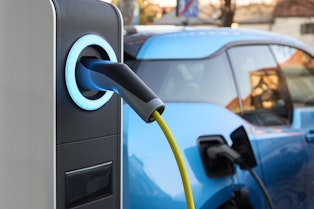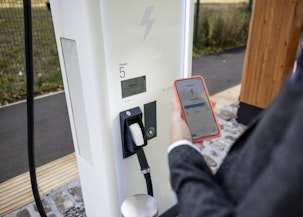
Jeremy Clarkson, the notorious presenter of Top Gear and other motoring shows, has famously said he will never own an electric vehicle (EV). Increasingly, though, he is on his own. Ordinary drivers are flocking to EVs in droves.
According to the 2022 Global EV Outlook from the International Energy Agency (IEA), sales of electric vehicles doubled in 2021, to a new record of 6.6 million. That means as many EVs were being sold each week last year as were driven off forecourts worldwide in the whole of 2012.
“Nearly 10% of global car sales were electric in 2021, four times the market share in 2019,” said the IEA. “This brought the total number of electric cars on the world’s roads to about 16.5 million, triple the amount in 2018.”
EV sales are being boosted by public spending on subsidies and incentives, which nearly doubled in 2021, to $30 billion, said the IEA.
Meanwhile, carmakers have massively expanded their electric vehicle ranges, with five times as many models available now as there were in 2015.
Even with supply chain constraints, “global sales of electric cars have kept rising strongly in 2022, with 2 million sold in the first quarter, up 75% from the same period in 2021,” observed the IEA.
This growing proportion of electric vehicles on the road is set to lead to some interesting changes in the way we travel by road—and the infrastructure we use to do so.
Nearly 10% of global car sales were electric in 2021, four times the market share in 2019
From a driver’s perspective, there may not be much difference between an electric vehicle and one powered by an internal combustion engine (ICE).
The electric model will be quieter, of course, and will not need filling up with petrol or diesel, which makes it better for the environment. Instead, electric vehicles will need to fill up on electricity.
Much has been made of the fact that EVs are not as reliable as ICE vehicles because they cannot go as far on a single battery charge.
This criticism ignores the obvious fact that an EV can charge up anywhere there is electricity, while an ICE car is well and truly grounded if it cannot make it to a petrol station.
Admittedly, it takes longer to fill up an EV, and here is perhaps where drivers will notice the biggest difference.
Although most trips will likely be within the range of a typical EV, allowing EV owners to charge up at home, perhaps using a system such as Pavecross, or at work, for instance in a car park with a solar canopy, at some point drivers may need to visit a service station.
With direct current (DC) fast charging equipment taking from 20 minutes to an hour to recharge an EV battery, the service stations of the future will need to be redesigned for significantly longer dwell times than at present. That is not a problem.
Service stations already act as mini retail units and keeping customers on site for longer will only increase the range of services they can offer, allowing operators to offset the loss of petrol and diesel sales with revenues from food and entertainment.
Behind the scenes, these service stations will also be much more technologically advanced than the ones we have today.

As the number of EVs on the road goes up, drivers and service station operators will need to rely on a kind of automated air traffic control system for cars, monitoring the amount of charge in each vehicle and booking recharging slots along each journey to avoid queues.
But perhaps the biggest change will be one that is completely invisible to drivers, and it involves battery storage.
At present, service stations are served by container trucks that travel up and down the country carrying petrol and diesel to the locations that need it. When the power for vehicles comes from the grid, a different arrangement is needed.
Although the electricity network is every bit as dense as the road network used to carry fossil fuels, not every part of the grid is set up to support EV charging. The batteries in these cars are relatively large, with enough energy to keep an entire home running overnight.
And if a driver wants to charge up quickly, they need access to a fair amount of power. DC fast chargers have a rated power of up to 350 kW, which is roughly enough to supply 10 homes.
If you attach several fast chargers to an out-of-the-way distribution network, you could easily end up drawing more power than the grid can supply. Fortunately, there is an easy way to deal with this, and that is by installing battery systems at or near the service station.
In such a setup, the batteries can supplement grid supplies when demand for EV charging exceeds the capacity of the local electricity network. Then the batteries can recharge when demand drops.
This simple arrangement avoids the need for costly and time-consuming grid upgrades and helps ensure the stability of the electricity network as the batteries can help balance local supply and demand when they are not being used for EV charging.
Plus, the batteries can help service station operators to improve their margins and/or offer cheap electricity to consumers, by charging up when energy prices are at their lowest.
Using batteries in this way is just one area in which battery energy storage systems can provide invaluable support for the grid. And it is one reason why we at Pacific Green are so excited about energy storage.
We have in-house expertise in almost every aspect of charging infrastructure, from car park canopy installations to complete service station designs. But where we are seeing the most activity at present is in battery storage.
For now, most of this is in the form of energy parks such as the 100 MW Richborough Energy Park, which will get its revenues directly from grid services. But as EV ownership grows, so will the demand for energy parks linked to service stations.
When that happens, we will be standing by to meet the need.
Publish date: 11 October, 2022